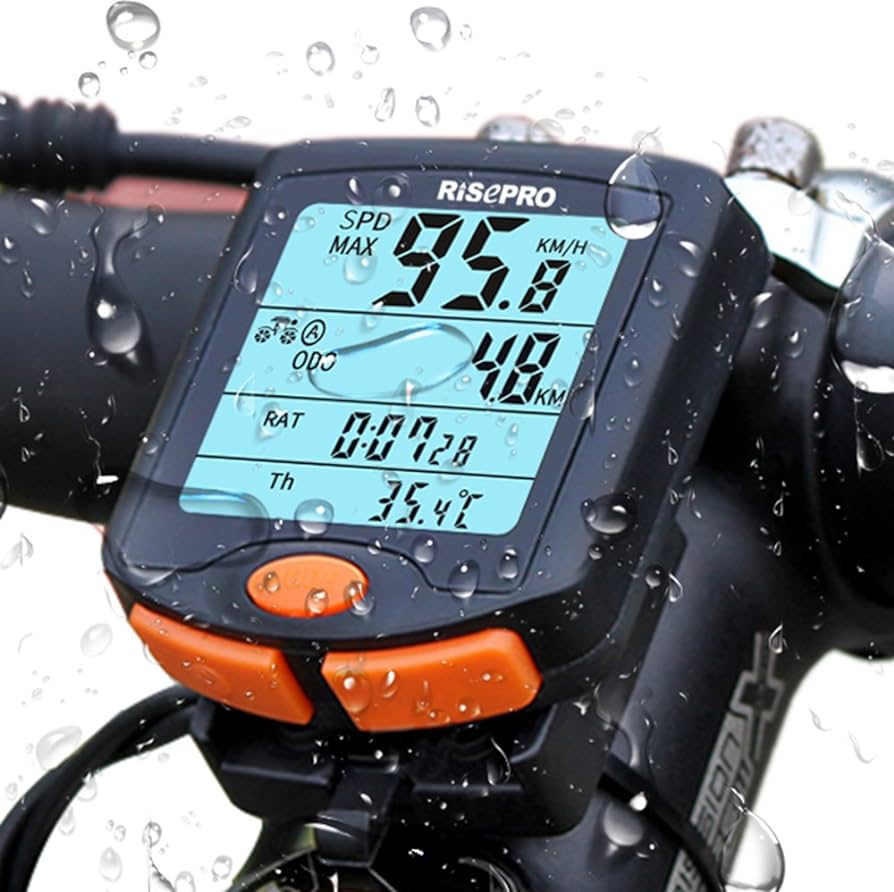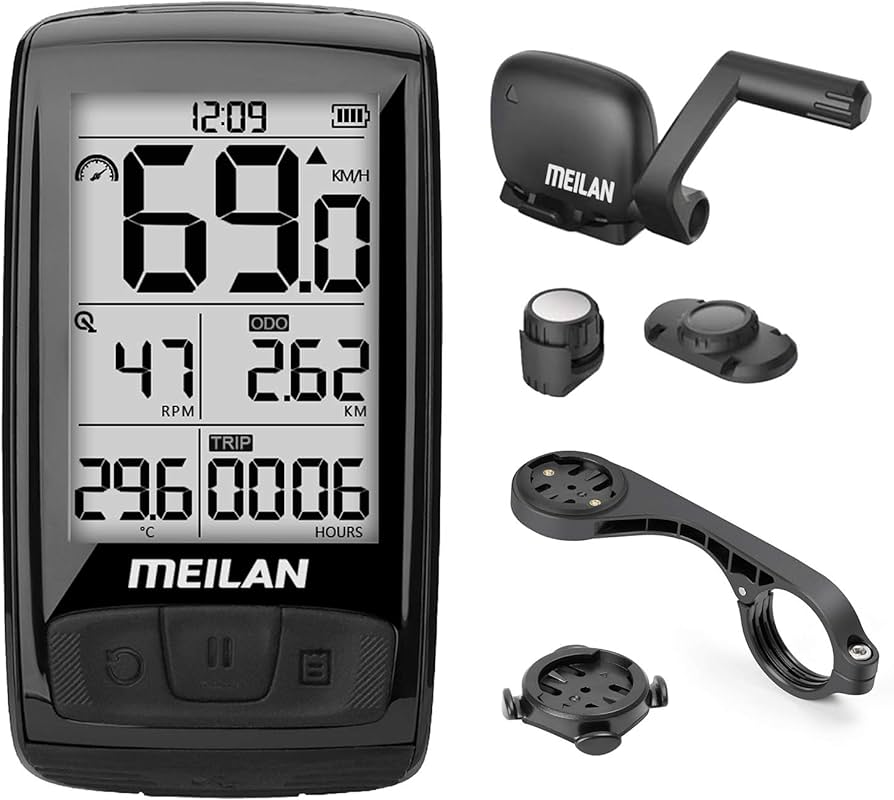I. Introduction: Unveiling Wireless Bike Computers
- Introduction to Cycling Technology and Its Impact on the Riding Experience
Cycling has evolved from a mere mode of transportation to a popular recreational activity and competitive sport. As cycling enthusiasts seek to enhance their performance, optimize training, and explore new routes, technology has emerged as a valuable companion. Among the various technological advancements that have transformed the cycling experience, wireless bike computers stand out as a game-changer.
- Wireless Bike Computers: Revolutionizing Data Tracking and Performance Analysis
Wireless bike computers have revolutionized the way cyclists track data, analyze performance, and navigate their rides. These versatile devices have transcended the limitations of traditional mechanical cyclometers, offering a comprehensive suite of features that cater to the needs of both casual riders and competitive cyclists.
- Key Features and Benefits of Wireless Bike Computers: Enhancing Your Cycling Journey
Wireless bike computers offer a plethora of features and benefits that enhance the cycling experience in numerous ways. From tracking essential metrics like speed, distance, and cadence to providing advanced insights into heart rate, altitude, and performance zones, these devices empower cyclists to make informed decisions, optimize their training, and achieve their cycling goals.
II. Essential Features of Wireless Bike Computers
-
Speed and Distance Tracking:
-
Wireless bike computers provide accurate real-time data on current, average, and maximum speed, allowing cyclists to gauge their pace and monitor progress throughout their ride. Additionally, distance tracking enables cyclists to measure the total distance covered, providing a sense of accomplishment and helping them track their overall cycling mileage.
-
Cadence Tracking:
-
Cadence, measured in revolutions per minute (RPM), refers to the pedaling rate of a cyclist. Wireless bike computers with cadence tracking help cyclists optimize their pedaling technique, improve efficiency, and reduce strain on their muscles and joints.
-
Heart Rate Monitoring:
-
Heart rate monitoring is an essential tool for cyclists seeking to manage their exertion levels, train effectively, and improve cardiovascular health. Wireless bike computers that integrate heart rate monitoring provide real-time data on heart rate, allowing cyclists to stay within target zones and optimize their workouts.
-
-
GPS functionality has transformed wireless bike computers into powerful navigation tools. Cyclists can plan routes, follow pre-set trails, and explore new paths with the aid of GPS navigation. This feature enhances the cycling experience by providing direction, tracking location, and enabling cyclists to venture beyond familiar routes.
-
Performance Metrics and Analysis:
-
Wireless bike computers go beyond basic data tracking, providing in-depth analysis of performance metrics. Cyclists can gain insights into calories burned, altitude, ascent/descent information, and other performance indicators, allowing them to evaluate their progress, identify areas for improvement, and set achievable goals.

-
Wireless Connectivity:
-
Wireless connectivity enables seamless data sharing and analysis between wireless bike computers and other devices. Cyclists can connect their computers to smartphones, fitness trackers, and other compatible devices to upload ride data, track overall fitness progress, and receive notifications.
-
Weather Information:
-
Wireless bike computers with weather integration provide real-time updates on current weather conditions and forecasts, allowing cyclists to make informed decisions about their rides. This feature enhances safety and preparedness by enabling cyclists to adjust their routes or postpone rides in adverse weather conditions.
-
Compatibility with Sensors and Accessories:
-
Wireless bike computers can be expanded with additional sensors and accessories to further enhance functionality. Speed sensors, cadence sensors, power meters, and heart rate monitors can be connected to compatible computers to provide even more detailed data and insights.
-
Battery Life:
-
When selecting a wireless bike computer, battery life is a crucial consideration. Cyclists should choose a computer with a battery life that can accommodate the length of their rides. Rechargeable batteries offer flexibility and convenience, while replaceable batteries provide an alternative option.

III. Benefits of Using Wireless Bike Computers
- Enhance Performance and Training:
- Wireless bike computers empower cyclists to optimize their performance by providing real-time data on key metrics like speed, cadence, and heart rate. This data can be used to adjust training intensity, identify areas for improvement, and track progress towards specific goals.
- Track Progress and Set Goals:
- Gone are the days of relying solely on memory or guesswork to track cycling progress. Wireless bike computers provide historical data on rides, allowing cyclists to monitor their improvement over time. This data visualization empowers them to set achievable goals, stay motivated, and celebrate their accomplishments.
- Improve Efficiency and Reduce Strain:
- By analyzing cadence data, cyclists can optimize their pedaling technique, ensuring smooth and efficient power transfer. This not only improves performance but also reduces muscle fatigue and strain, allowing for longer and more enjoyable rides.
- Stay Connected and Informed:
- Wireless bike computers provide real-time data on various metrics, keeping cyclists informed and connected throughout their rides. With a quick glance at the display, they can see their speed, distance covered, heart rate, and even receive navigation information, eliminating the need to constantly check their smartphones.
- Explore New Routes and Adventures:
- GPS functionality on wireless bike computers unlocks a world of exploration for cyclists. They can discover new trails, navigate unfamiliar routes with confidence, and plan exciting cycling adventures beyond their usual paths. This feature encourages exploration, adds variety to cycling routines, and keeps the riding experience fresh and exciting.

-
-
Gain Insights into Cycling Habits:
-
Wireless bike computers provide a wealth of data that can be analyzed to gain valuable insights into cycling habits. By tracking metrics over time, cyclists can identify patterns, trends, and areas for improvement. This data-driven approach allows them to refine their training strategies and personalize their cycling experience.
-
Stay Safe and Prepared:
-
With weather information readily available on some wireless bike computers, cyclists can make informed decisions about their rides. Real-time weather updates and forecasts allow them to adjust routes to avoid bad weather, dress appropriately for the conditions, and enhance overall safety on the road.
-
Motivate and Inspire Yourself:
-
Tracking progress and visualizing improvement can be a powerful motivator. Wireless bike computers provide cyclists with the data they need to see their hard work pay off. Celebrating milestones, achieving goals, and witnessing personal growth can inspire cyclists to continue pursuing their cycling aspirations.
IV. Types of Wireless Bike Computers
-
Head Unit Bike Computers: Mounted directly on the handlebars, head unit bike computers offer a large and clear display for easy viewing of data during rides. These are popular choices for cyclists who prioritize detailed data visualization and accessibility.
-
Cyclists’ Watches: Combining the functionality of a bike computer with the features of a smartwatch, cyclists’ watches offer a versatile solution. They provide essential data tracking on the wrist while offering additional features like heart rate monitoring, activity tracking, and smartphone notifications, making them suitable for both cycling and everyday use.
-
Smartphone Apps: For cyclists seeking a budget-friendly option, smartphone apps can transform their smartphones into basic bike computers. These apps utilize GPS and phone sensors to track essential metrics like speed, distance, and elapsed time. While they may lack the advanced features of dedicated bike computers, they offer a convenient and accessible entry point into data tracking for casual riders.
V. Selecting the Right Wireless Bike Computer
Choosing the right wireless bike computer involves carefully considering your specific needs and preferences. Here are some key factors to keep in mind:
-
Consider Your Cycling Needs and Goals: Identify the type of data that is most important to you. If you’re a casual rider focused on distance and pace, a basic computer might suffice. However, performance-oriented cyclists may require advanced metrics like heart rate and power output.
-
Evaluate Battery Life: Battery life is crucial, especially for cyclists who embark on long rides. Choose a computer with a battery life that can comfortably last the duration of your typical rides. Look for models with rechargeable batteries for eco-friendliness and convenience.
-
Assess Display Size and Visibility: A clear and easily readable display is essential for quick data access while riding. Consider the size and resolution of the display, ensuring it’s large enough for you to view important information comfortably in various lighting conditions.
-
Consider Compatibility with Sensors and Accessories: If you plan to use additional sensors like heart rate monitors or power meters, ensure the wireless bike computer you choose is compatible with those accessories.
-
Check User Reviews and Ratings: Reading reviews and comparing ratings from other cyclists can provide valuable insights into the performance, user-friendliness, and overall value of different wireless bike computer models.
-

